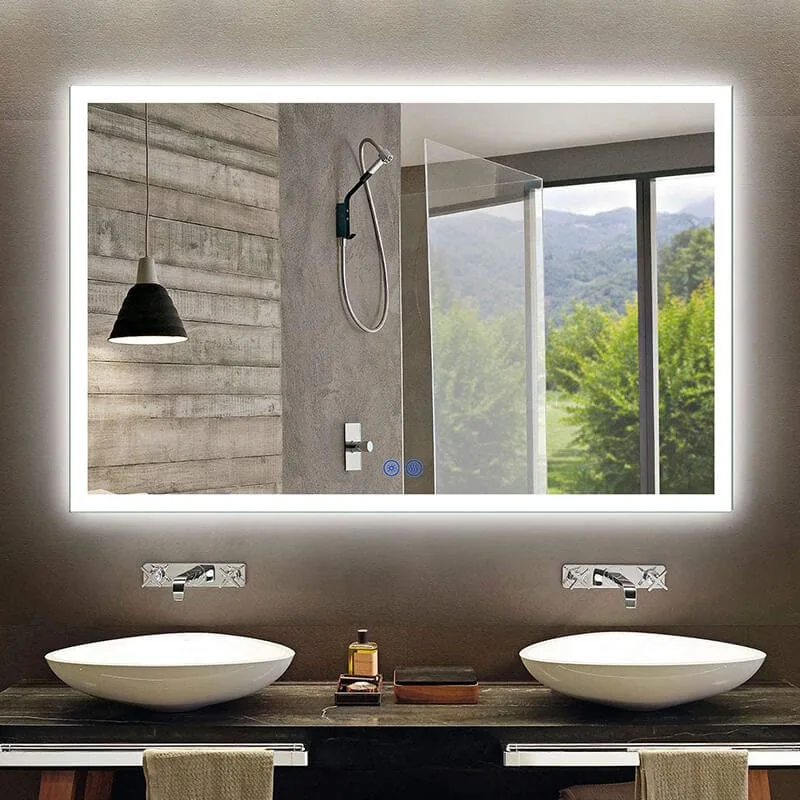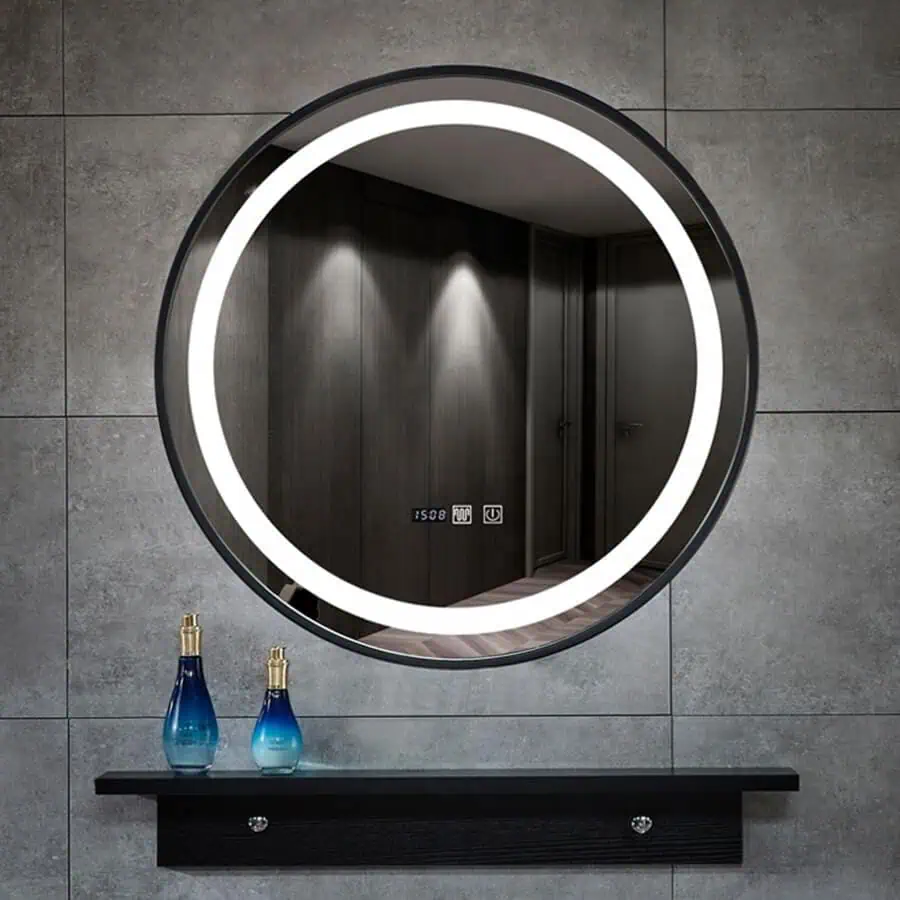جدول المحتويات
تبديلIntroduction
In an era where technology and life are seamlessly intertwined, smart products have been improving our lives and the world around us. Smart watches, smart mirrors, smart cars,إلخ. Among the emerging smart products, smart mirrors have become a hit in home decoration.
So, what is a smart mirror? What are the advantages? Let’s unveil the magic.
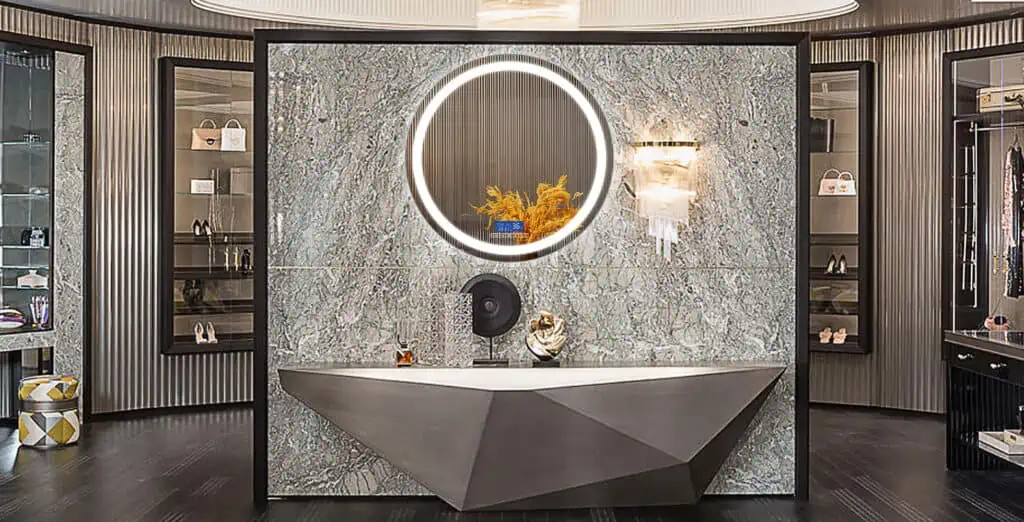
What is the Difference Between a Smart Mirror and a Normal Mirror?
In the evolving landscape of home accessories, mirrors have undergone a transformative journey, with LED mirrors emerging as a contemporary and tech-savvy counterpart to traditional, normal mirrors. Let’s delve into the key differences that set these two mirror variants apart.
1. Technological Prowess
Smart Mirrors are equipped with embedded technology, typically with interactive displays or connectivity to external devices. Many smart mirrors have touchscreen capabilities that allow users to interact with the mirror’s interface for a variety of purposes.
Normal mirror’s main function is to reflect images without the need for additional technical elements.
2. Multifunctional functions
Smart mirrors’ common functions include defogging function, magnifying function, digital clock, Bluetooth, human body induction, إلخ.
Normal mirrors traditionally focus solely on providing a reflective surface for personal grooming and viewing.

3. Smart Lighting and Adjustment
LED mirrors feature adjustable lighting settings, catering to different needs such as makeup application or ambient illumination.
Normal mirrors typically have fixed lighting, relying on external light sources.
4. Cost Considerations
LED mirror’s price is higher, due to embedded technology and additional features.
Normal mirrors are generally more cost-effective as they focus on the fundamental function of reflection.

What Smart Mirrors Can Do?
Smart mirrors represent a revolutionary fusion of technology and everyday functionality, offering a plethora of features that extend far beyond the traditional role of a reflective surface.
1. Interactive Displays
LED mirrors often feature interactive displays. Users can interact with the mirror, accessing various functionalities through touch.
2. Anti-Fog function
Maintain clarity even in steamy environments. Smart mirrors with anti-fog capabilities use integrated heating elements to prevent condensation, ensuring a clear view after showers.
3. Magnification Function
Perfect your look with built-in magnification features. LED mirrors often include magnifying capabilities, catering to detailed grooming tasks and providing a closer look when needed.
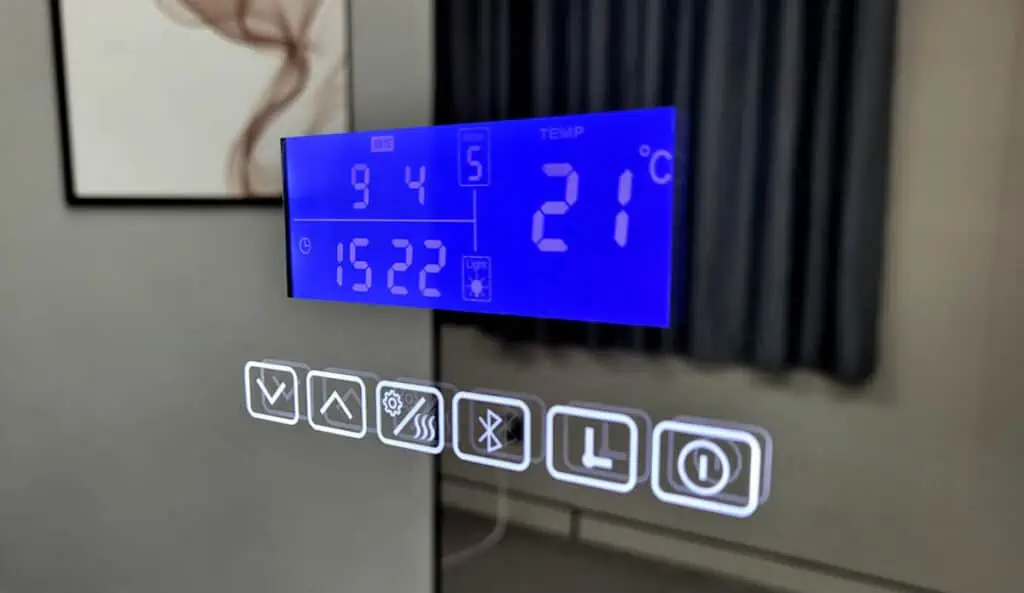
4. Digital Clock and Temperature Display
Elevate your mirror to a multi-functional accessory. Some smart mirrors display not only the time but also the current temperature, helping you plan your day more efficiently.
5. وظيفة البلوتوث
Enhance your daily routine with integrated Bluetooth functionality. Connect your smart mirror to external devices, enabling features such as playing music or answering calls directly from the mirror.
6. Adjustable Lighting
Tailor the lighting to your needs. Smart mirrors often feature adjustable lighting settings, allowing you to optimize the illumination for tasks like makeup application or creating a relaxing ambiance.
7. Weather Updates
Planning your day becomes seamless with smart mirrors that provide live weather updates. Stay ahead of the forecast right from your mirror, preparing for whatever the day may bring.
8. Customizable Lighting Colors
Set the mood with customizable lighting colors. LED mirrors with this feature allow you to choose from a spectrum of colors, adding a personalized touch to your environment.
9. Human Body Sensing
Enhance energy efficiency. LED mirrors with human body sensing capabilities can adjust lighting and other features based on the presence or absence of users, optimizing functionality as needed.
10. Radar Function
Some advanced smart mirrors incorporate radar technology, enabling touchless gesture control. Wave your hand to operate the mirror or access specific features without physical contact.
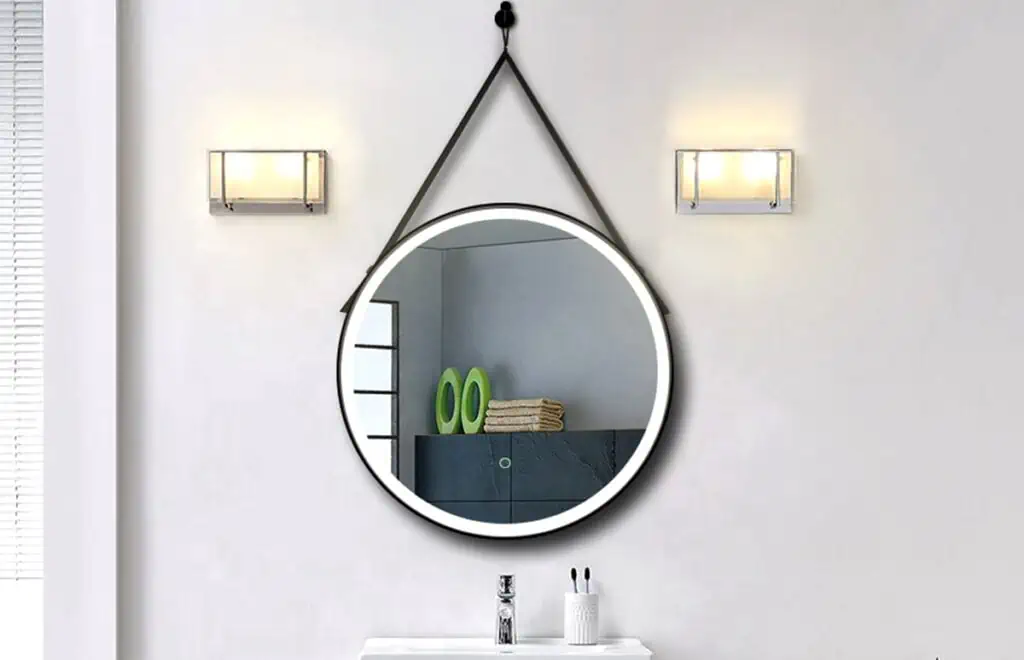
Cost Factors to Think About
The cost of smart mirrors and ordinary mirrors is different.
LED mirrors are usually more expensive than regular mirrors because smart mirrors have better packaging and more functions. CE certification and UL certification are also important in many countries. A smart mirror can cost anywhere from $50 to $1,000, depending on the size and functionality of the mirror.
You can buy a LED mirror with your favorite function according to your budget. In addition, هيكسن‘s smart mirror supports shape customization, all functions can be combined at will, the MOQ is low, and free LOGO customization is supported.
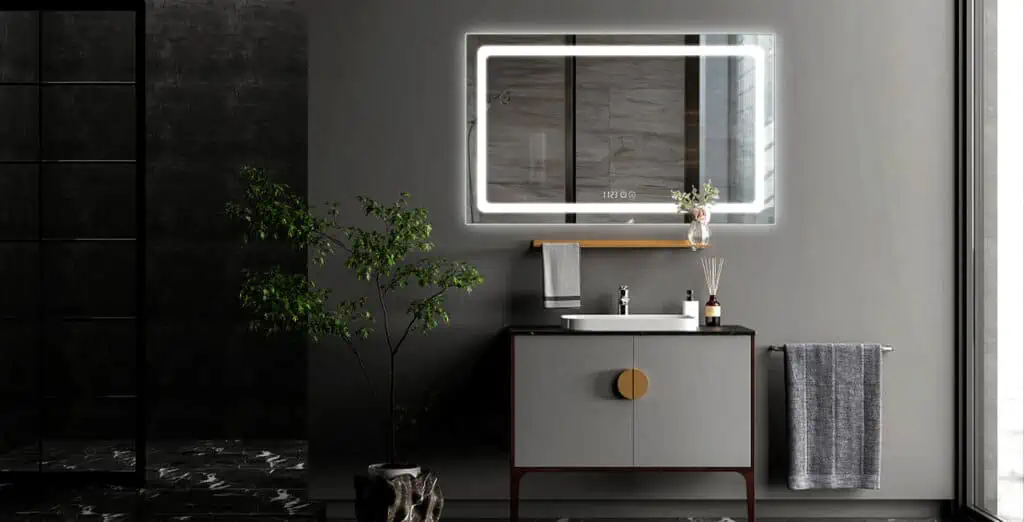
خاتمة
This article introduces the differences between smart mirrors and ordinary mirrors, and I hope it will be helpful for you to choose a mirror.
It all comes down to personal hobbies. If you’re a traditionalist who wants a simple reflective surface, a regular mirror is more suitable for you. An LED mirror is the way to go if you’re a tech-lover who wants all the smart features.
If you are looking for a reliable supplier, why not choose هيكسن? We have more than ten years of experience in the mirror field, we support customizing mirrors of various shapes and functions, professional packaging team and logistics team can quickly deliver mirrors to your home, and support free logo customization, if interested, feel free to اتصل بنا.


